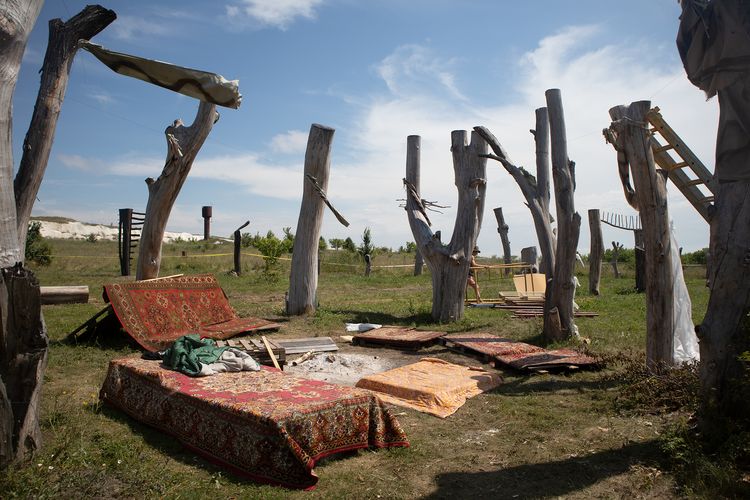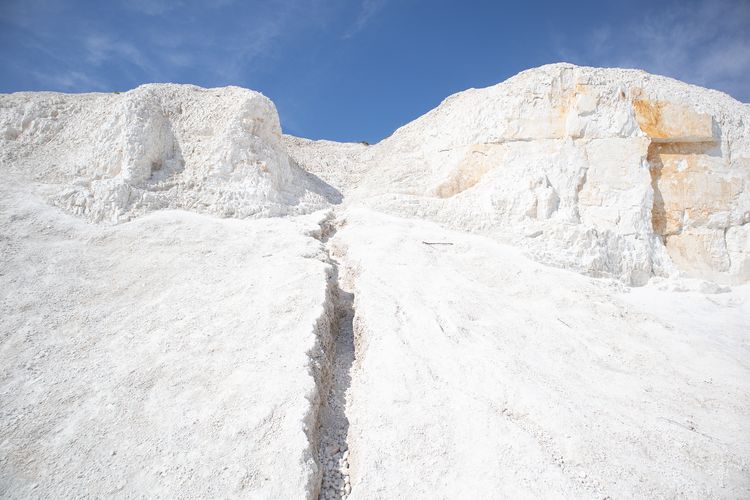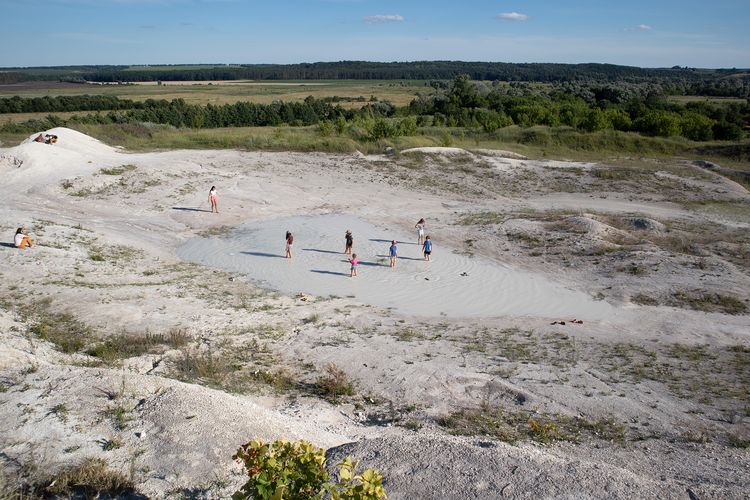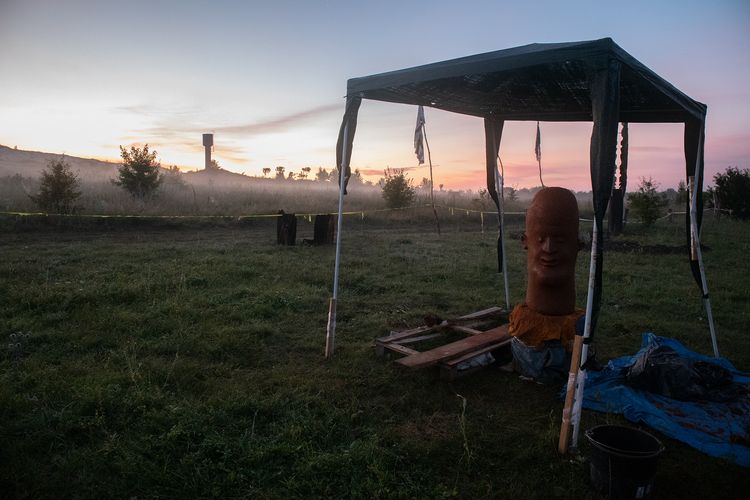Grounding. Search for Interaction with the White Land
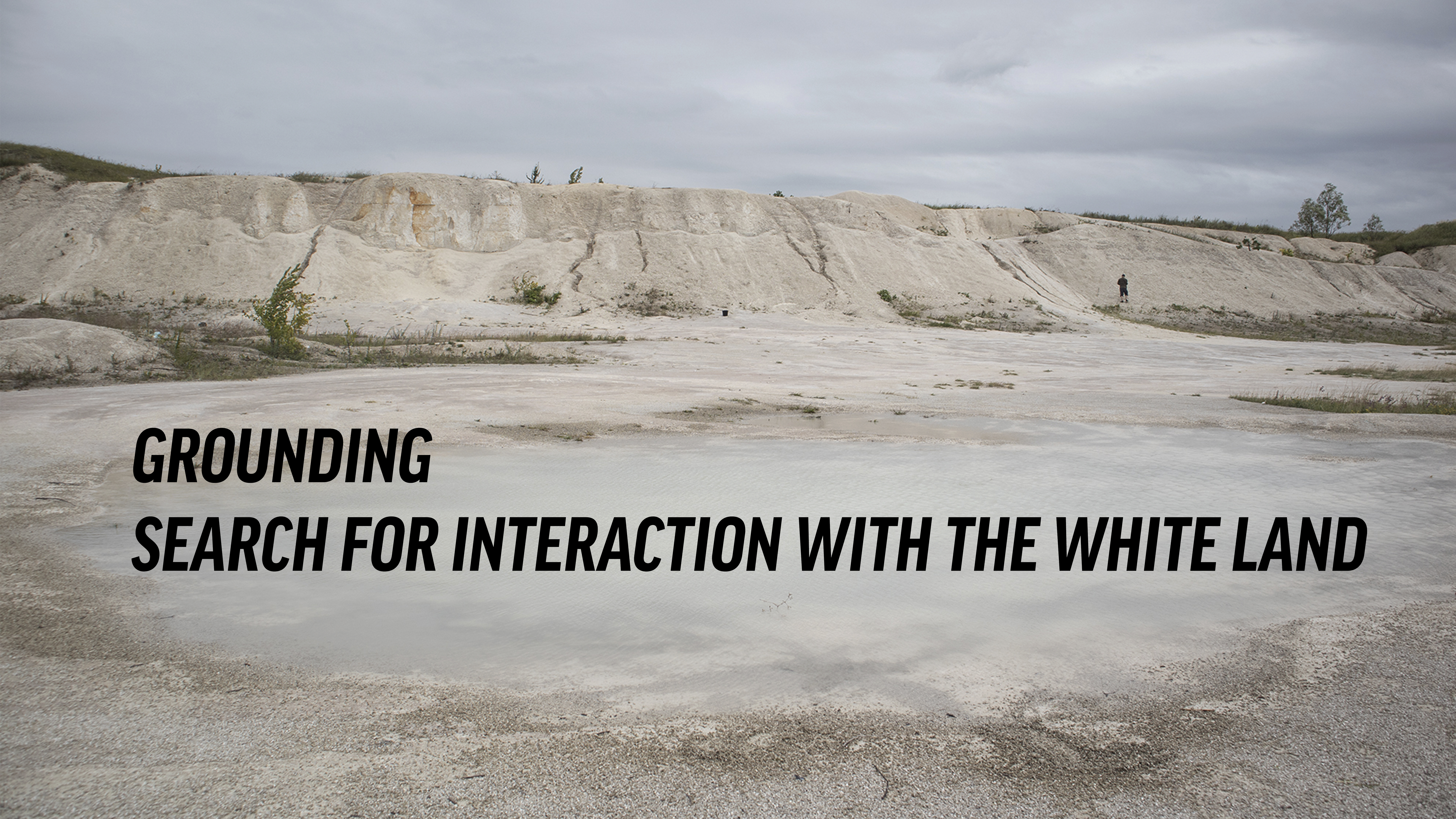
“Gurtobus. In search of interaction” – this is how we defined the theme of our first expedition to the land-art symposium “Borderland Space” in the village of Mogritsa.
For almost a week, videographer and photographer Anna Rogotska, researcher Anna Potemkina and Gurtobus curator Olena Mason recorded interviews, watched the creation of works, greeted the sunrises and looked for interaction with artists and curators of the symposium.
Cretaceous quarries, untouched landscapes, the power of the earth, the comet Neowise, which just then came as close as possible to our planet.
According to the participants of Mogritsa, this place gives a feeling of timelessness, a return to primevalness and the power of nature. Someone experiences unity with the earth, someone has a sense of mysticism.
British anthropologist Tim Ingold has an image of “an environment that is itself pregnant with the past”*.
Artifacts from primordial times have been preserved in the chalk rock forever, the earth is pregnant with memory. Underfoot everywhere lie “devil's fingers”, or belemnites, witnesses of the Mesozoic era and the presence of the World Ocean, in the very place where the symposium is held. This is a certain framework and conditions in which artists work.
You have to be vigilant, contemplate, do no harm - this is an unwritten rule for the participating land-art artists.
So what is Mogritsa? Why has this place been attracting and simultaneously paralyzing so many artists from all over Ukraine for 23 years?
Katya Buchachska, an artist:
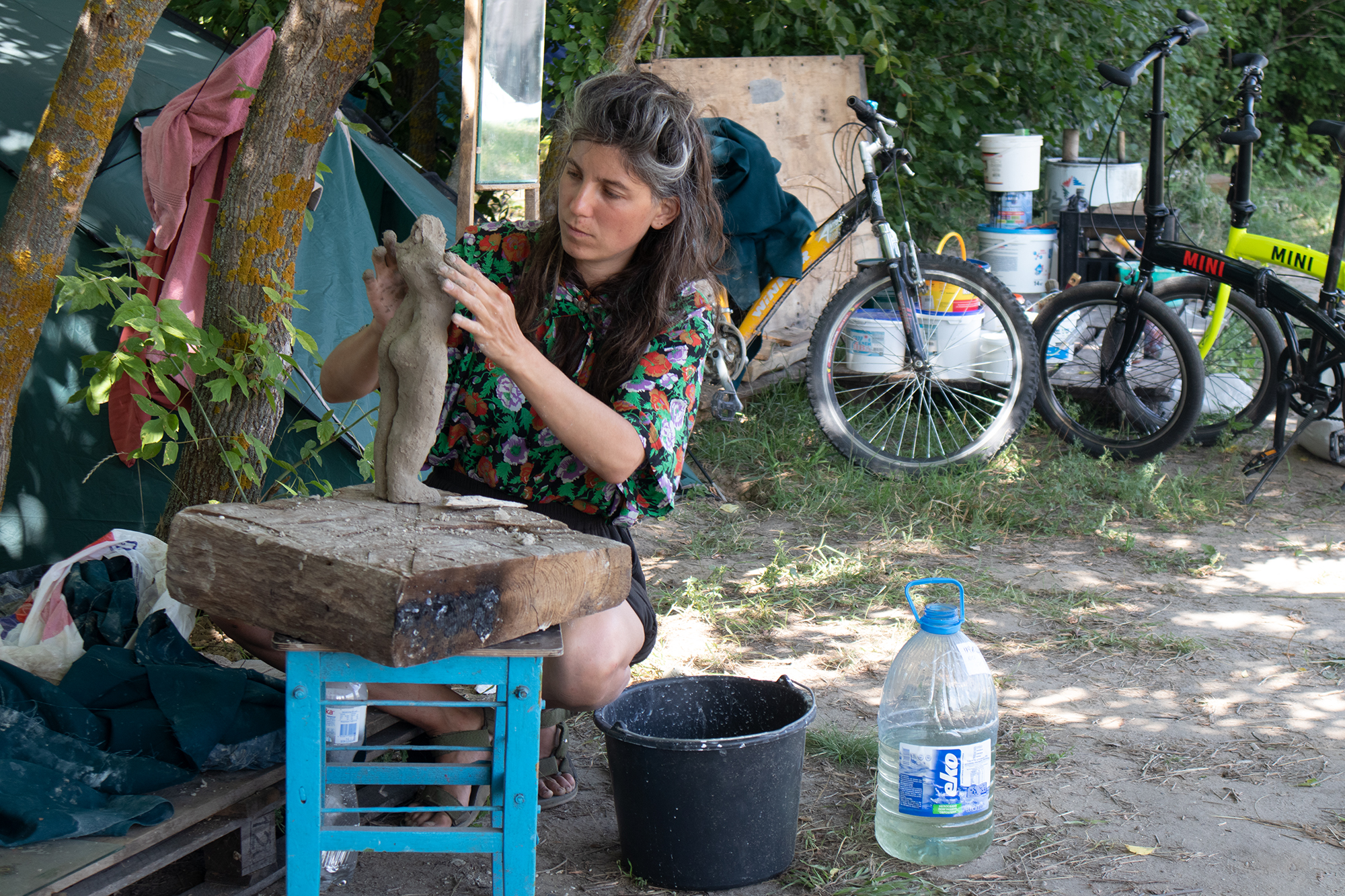
"Mogritsa is not a place. This is a community. There is no work for the result.
We don’t owe anything to any institution, there is no financial component, and this makes it possible to bring our thought to a result and show, perhaps, five people.
I see that Mogritsa is developing. I associate this with the emergence of new members, at least with the arrival of our Kyiv group (Katya Buchachska, Lyusya Ivanova, Yegor Antsigin, Stanislav Turina and others). They added a new approach to land-art's theorizing. At the same time, we were afraid to harm, radically change the vector, and interfere with the existing atmosphere.
Satisfaction with the work done did not come to me immediately. I have spent most of my life implementing a plan for who an artist is. I thought about how to get the work done right. You could neglect your own interests to get the work done right. Now the understanding has come that there can be any work and there should not be any specific work. You should feel it.
In the first year or two, I was literally stunned in front of the landscape, did not understand what could be added? Will my work find its place here? Can I create an object without creating anything? I had the experience of hard working pieces, there were reflections. This year, for example, I will generally open a gallery with a buffet table and a party.
There was a ban on “digging”, because how much more can you dig? And, for example, the year before last there was already a work with abstract digging, where the authors sometimes dig. The Land-art Symposium has become multidisciplinary, adding media, sound, audio, video. You don't have to shovel anymore."
The schedule for the symposium is very intuitive, everyone works at their own pace, everyone accelerates only in the last days before presentations. Two weeks of endless tea parties, preparation of impromptu workshops, discussion of ideas with curators and around the fire.
The weather becomes a frame and condition for work. Participants never know when, instead of realizing their idea, they will have to dig trenches to drain rainwater.
The weather can change everything, it can disrupt work, it can make you stop for a few days while it rains. No one complains and accepts the circumstances as they are.
We talk with the Kharkiv artist Kostyantyn Zorkin, while several participants catch the rhythm of the rain on tom-toms, creating a symphony of a natural orchestra.
Kostyantyn Zorkin
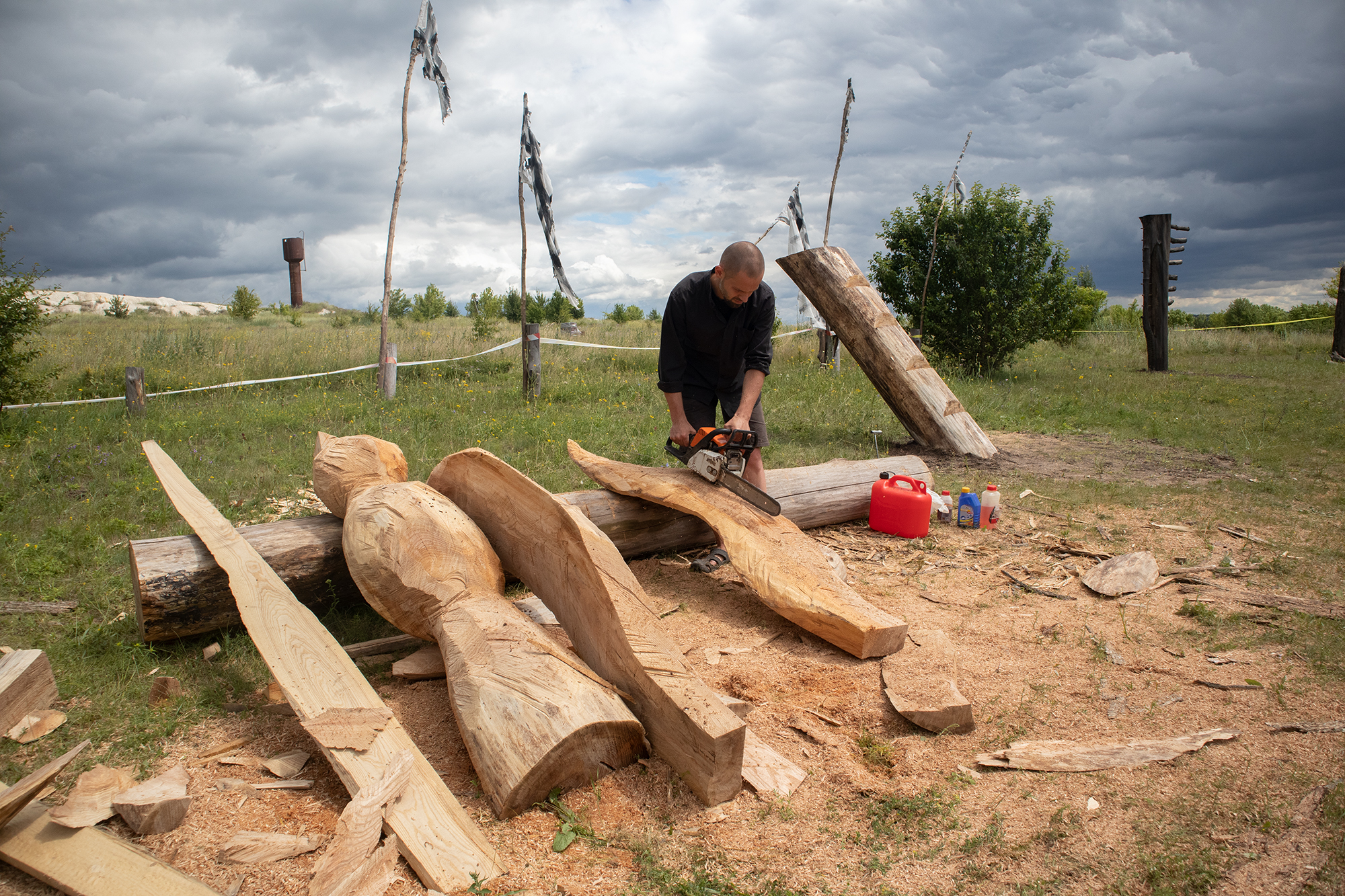
Kostyantyn Zorkin is one of the curators of this year’s symposium. Together with their group, they strove to define and systematize the features of the Ukrainian land-art. These traits are haphazard; some are just funny.
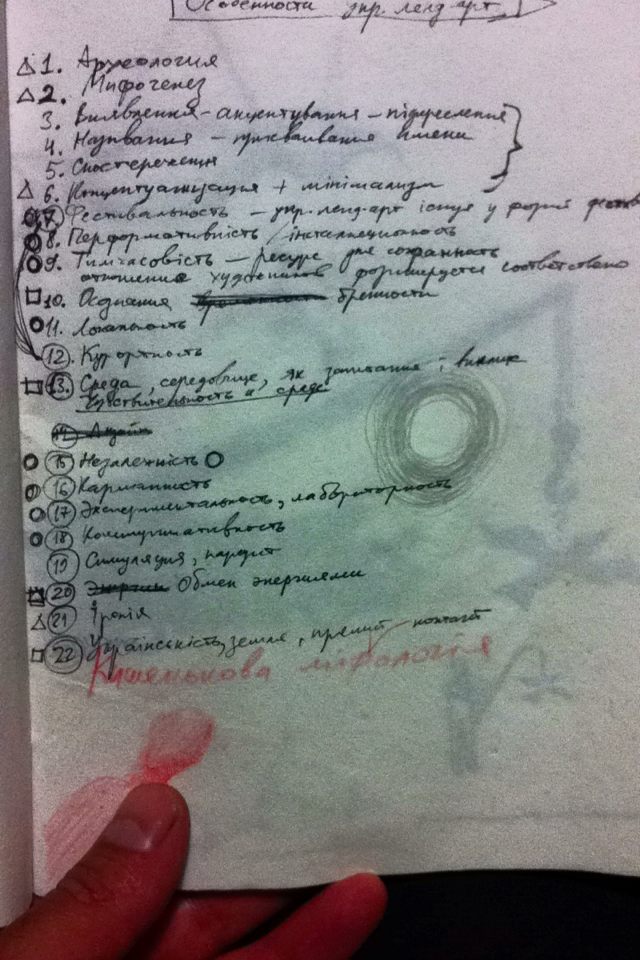
The triangle denotes a broad spectrum of common features.
The circle is external features.
The square is metaphysical.
The rest are formal and unimportant.
Here are some of them:
- Archaeological
- Myphogenesis
- Conceptuality and Minimalism
- Irony
- Energy exchange
- Observation
- Performativity / Installation
- Temporality
- Independence
- Experimental and Laboratory
- Communication
Mogritsa is an energy field. It took me three years to get to it and when I got there, I had the feeling that I was always a part of it. This is a timeless space.
There are such artists who are distinguished by their special work with the material and the choice of materials themselves, as well as the absence of intermediaries in this process. By intermediaries, I mean those factors that tie the artist to the requirements of the time, society, market, fashion, and the like.
It's like an apple that you pick from a tree and eat. You see the apple, you see the tree from which it was plucked, the joy of contact is simple and immediate. Eating an apple from a tree is a completely different matter than buying an apple at the supermarket. An apple from a tree and from a supermarket are two different apples, although outwardly they can be confused. Likewise, the unnaturalness of art contradicts the earth and the nature of creativity associated with the earth. Artists, accustomed to a “sterile” context, conceptualized, politicized and mediated art, once in the Borderland Space, try to project their usual position onto this environment. But here art cannot be sterilized, because life hits from all sides, we are now physically sitting under a roof because of the rain.
Naturalness in land-art is expressed literally: through sensitivity to the place, through the refusal of preliminary preparatory work, through live action in response to a non-verbal question of a living context. When I take a knife and carve out of wood, there are almost no barriers between my body and the body of the tree. Around the sun, wind, rain, grass, birds. And there are no barriers either. This principle is difficult to transfer to the workshop.
For me, a natural, organic line in art is a magic line. There have never been many magic line artists. But they are. Vlodko Kaufman, Sergiy Yakunin, Vitaly Kokhan, Olexandr Zhivotkov, Petro Bevza, Anton Sayenko, Natasha Lisova - these are for me those artists who not only work with living materials, but also connect their creative practice with land-art on a metaphysical level.
This kind of art is very Ukrainian. The mystical approach is very natural for us. I myself did not understand this for a long time, because I grew up in a Soviet family. Even the understanding of what the Ukrainian language is, that it is not a variation of the Russian language, came to me late. Language is associated with the earth, it shapes and transforms thinking in the same way as the language of art.
Now I come to my workshop, and I feel lack of the earth, I feel lack of natural material.
Space itself is mythologized in Mogritsa.
A stork or a falcon is flying. They don't know that we are looking at them, and think about their symbolism, they just fly here. There is generic code here that anyone can read without special intellectual training. It is a great happiness that knowledge comes directly to you, this is the magic of the land on which you stand.
For the place where we are, it does not matter which school or institution is behind you. The place is interested in contact with you. Like walking on wet grass, or bathing without clothes, or making environmental art. This is non-verbal communication with nature.
People who come here with pre-prepared work often do not even try to feel. One of the features of the Ukrainian land-art, in contrast to, for example, the Polish one, is its sensitivity to the environment. You must surrender to the magic of this place.
Oksana Solop
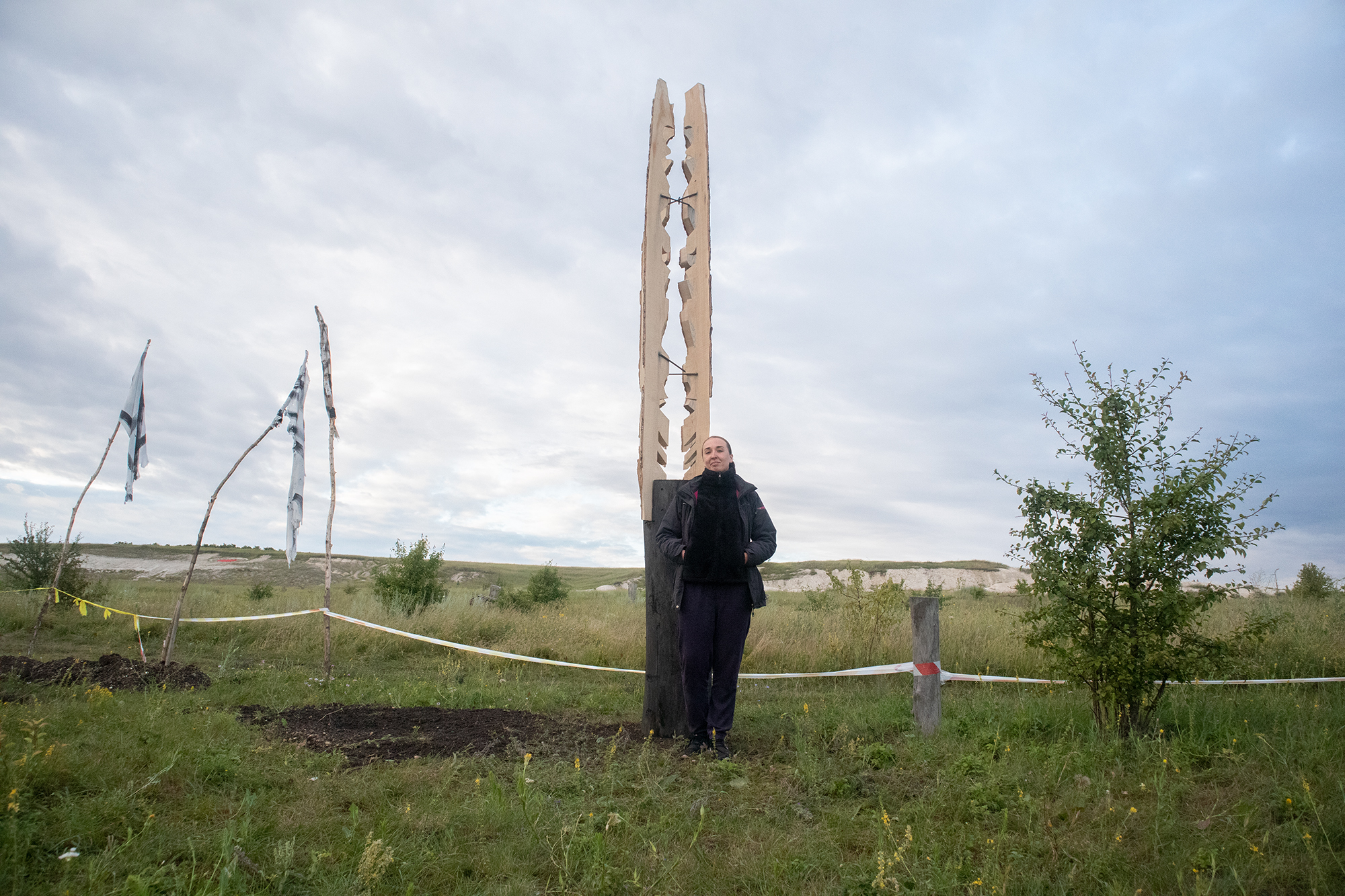
This year, Oksana Solop's work is a tall, charred wooden sculpture made up of three sharp-edged sides. The work towers over the entire camp like a monumental guard.
For the first time I joined the symposium in 2007. It was the night of Ivan Kupala. Ceramics firing, bonfire, dancing. I was wondering what is going on here, why is it here that everyone gathers?
Then I didn't understand anything.I had to go back in 2016, and then I rediscovered this place.
The mystical began for me when I started creating work here. At first I did classical pieces, then there was digging, and then performances and video art. This year it is an object. It's a new experiment every time.
A spiritual experience may or may not happen here. You have to be sensitive enough, and do not sublimate.All the elements around you, a huge moon, a quarry with its own history. Sometimes it seems to me that I can control these elements, sometimes it only seems so. There is a lot of pagan power, primordial.
I have endowed my current work with the power of a talisman that should protect this place. This place is about “your people”. If you are pure in heart and open, it will definitely let you in. Mogritsa is a family, without which you can no longer imagine yourself.
All participants spend the last night by the fire, we are waiting for the performance at 4:30 a.m. from the artist Eliza Mamardashvili. All gathered at the scene.
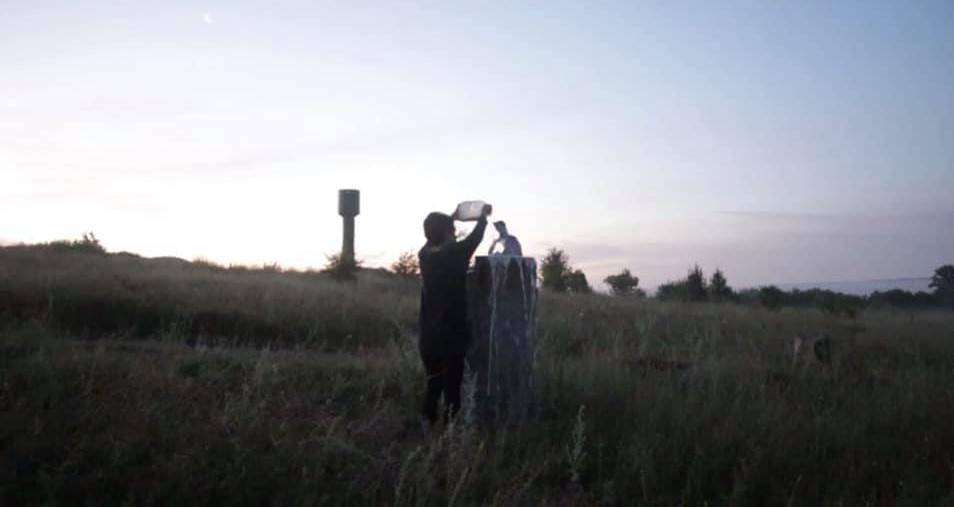
As the sun begins to rise, Eliza emerges from the tall grass with jugs of still wet clay and filled with milk. She places the jugs on wooden posts, which become stops on her way. In a matter of minutes, she goes around the circle, returns clay to the ground, with strong hands mixes clay, grass, milk, returning everything to its place - to the origins, to the beginning.
This report was produced as part of the “Grounding” research.
The study, proposed by IZOLYATSIA at the end of 2019 and called the “Earthing”, takes as a starting point the concept of the Anthropocene, developed by scientists in the early 2000s, but quickly appropriated by various fields of humanitarian knowledge, including contemporary art.
* Ingold Tim, The Temporality of the Landscape // World Archaeology, Vol. 25, No. 2, Conceptions of Time and Ancient Society (Oct., 1993), pp. 152-174.
For more information on Grounding, see the link.
Read more about Mogritsa in the “Grounding” topic in the article “Landscape Lives Its Own Life”.
